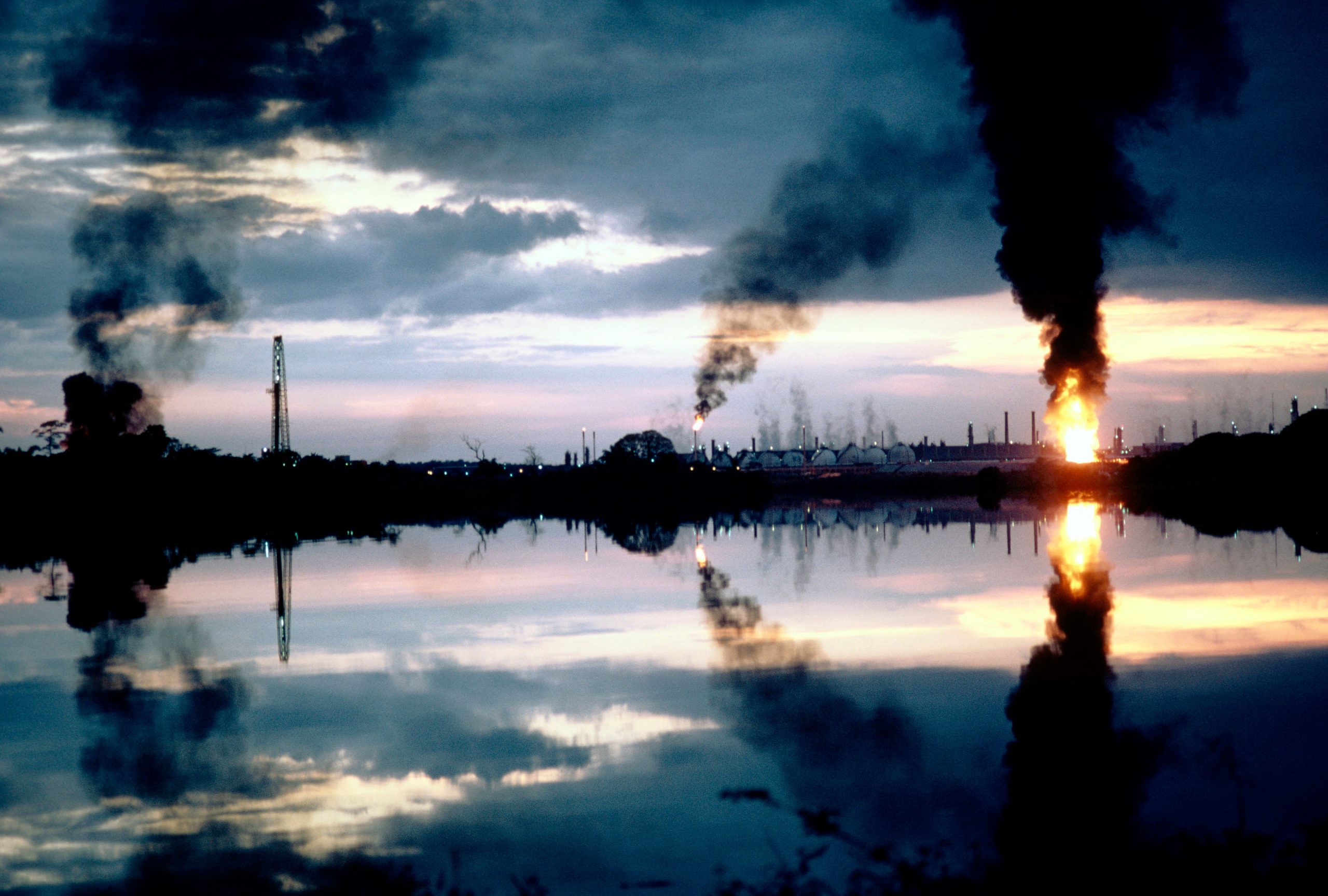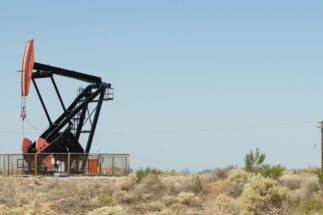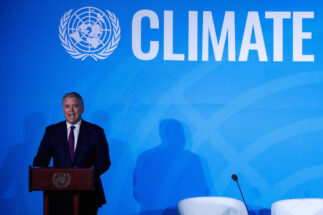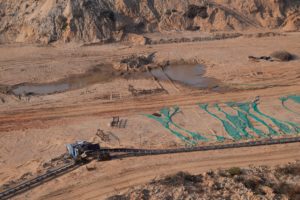Over the course of two decades, Mexico positioned itself as a leader on environmental matters in Latin America. Yet, under the government of Andrés Manuel López Obrador, known as AMLO, who took office in December 2018, the country has relegated environmental issues both in rhetoric and in policy.
“Mexico has halted years of progress in the energy sector with decisions that threaten to reverse progress towards improved climate action,” the UN’s 2019 Emissions Gap Report wrote. It was one of the first to sound the alarm on Mexico’s backsliding.
The report also questioned programmes that limit the greater deployment of clean energy and support the oil industry through the construction of a refinery in the state of Tabasco, southeastern Mexico.
2,500
hectares of forests are threatened by the Mayan Train in Yucatan
AMLO has attracted copious criticism for his neglect of the environment. Civil society groups have protested against the Mayan Train, which threatens to destroy more than 2,500 hectares of forests in the Yucatan peninsula. In October 2019, 90 organisations wrote to the president demanding that he use the public budget to protect the environment.
As part of his austerity measures that he hopes will eliminate corruption, AMLO slashed the budgets of environmental institutions. In his first year in office, the Undersecretariat of Planning and Environmental Policy had its budget cut by 74%. The National Commission for Protected Natural Areas (CONANP) had its operational expenses cut by 75% and a laid off of 200 employees.
Workers from these agencies wrote to the government denouncing the negative consequences of budget cuts on communities and the environment. In response, then environment secretary Víctor Manuel Toledo, claimed criticisms were unsubstantiated and emanated from political rivals.
Mexico’s earlier climate leadership
Rewind 10 years and Mexico’s advances in the environmental field were impressive, according to Adrián Fernández, executive director of the NGO Climate Initiative of Mexico.
“In 2010, Mexico did a formidable job promoting the climate negotiations during the Cancún summit, after the failure of talks to combat the phenomenon in Copenhagen the previous year,” Fernández told Diálogo Chino. That round of negotiations were led by Patricia Espinosa, who in 2016 went on to be named executive secretary of the UNFCCC, the arm of the UN that oversees climate talks.
In 2010, Mexico did a formidable job promoting the climate negotiations during the Cancún summit
Mexico was also the first developing country to have a general climate change law, approved in 2012, and to issue its voluntary emissions reductions plan to the UNFCCC in 2015 in advance of the summit that resulted in the Paris Agreement.
Furthermore, Mexico is the only developing country to issue the UNFCCC with six environmental communications – reports that include an inventory of polluting emissions, actions to tackle them and adapt to the climate emergency.
Mexico’s setback and consequences for the planet
Despite Mexico’s recent advances, AMLO has prioritised the extraction and burning of fossil fuels in defence of the country’s energy sovereignty. In his quest to ease dependency on imported oil, especially from the US, he has overlooked renewable alternatives.
Similarly, AMLO has all but halted the progress of the 2013 energy reform that opened hydrocarbon and electricity markets to private capital. Instead, he favours state companies the Comision Federal de Electricidad (CFE) and Petróleos Mexicanos.
“There is an understanding of the energy sector that seems outdated and driven by ideology,” said Lourdes Melgar, undersecretary of energy under the previous government. “The challenges of the 21st century cannot be solved with a vision from the 1930s.”
Lourdes added that if the country had kept the industry open to private investment, it would have the technical knowledge and financing needed to develop a wide variety of resources, including wind and solar energy.
Now, however, Mexico’s actions risk failing to comply with new environmental and climate goals. According to the Global Carbon Atlas, Mexico and Brazil are the two highest emitting countries in Latin America and rank among the top 15 in the world.
Did you know…?
Mexico and Brazil are the two countries with the highest emissions in Latin America
Emissions in Mexico have increased by 70% since 1990 and are projected to grow, leaving Mexico wayward as the world aims to limit global warming to 1.5C by the end of the century, the more ambitious goal of the Paris Agreement.
In its 2015 climate plan, Mexico voluntarily pledged a 22% emissions reductions by 2030, largely from energy generation. On December 29 last year, Mexico presented its updated plan, without increasing its emissions cuts goal, to the disappointment of environmental organizations, and in contravention of the Paris Agreement and the Climate Change Law.
As if that weren’t enough, the economic recovery plans of the G20, of which Mexico is a member are considered harmful to the environment, according to UK consultancy Vivid Economics.
“It is no longer possible to hide,” warned Fernández. The world is already looking at environment and energy policy choices. That prestige that Mexico built is going to fall very fast and very hard. There is a risk of becoming climate change pariahs.”
Small progress on plastic, green bonds and the Escazú agreement
Amid a bleak outlook, some environmental measures have advanced. Mexico City has prohibited the use of single-use plastics as of this year. The provision seeks to reduce non-recyclable waste and soil and water contamination. However, many businesses have no alternatives, demonstrating the barriers to the rule’s application.
Despite the Mexican government trying to corner it, the renewable industry is making progress, driven by the private sector and international interests. In November, China Power International Holding Limited, a subsidiary of the state-owned State Power Investment Corporation, acquired Mexico’s Zuma Energía, the country’s largest renewables company and owner of two solar and two wind farms, with a total installed capacity of 818MW.
It is no longer possible to hide. That prestige that Mexico built is going to fall very fast and very hard. There is a risk of becoming climate change pariahs.
Due to its size, the arrival of a new Chinese player to Mexico’s renewable market could indicate greater investment in alternative energies in the future, although it will have to face restrictions imposed by the AMLO’s government.
One positive development in environmental matters was the senate’s November 5 unanimous ratification of the Escazú Agreement, the first regional environmental treaty that seeks to improve access to public information, citizen participation and justice on environmental issues in Latin America and the Caribbean. This agreement is considered one of the most important instruments for environmental protection in the region and the signing of a big country such as Mexico could encourage others.
Another advance is green bonds, instruments to offer exclusive financing opportunities for projects such as renewable energy, sustainable construction, energy efficiency, clean transportation, water, waste management and agriculture. In 2015, state bank Nacional Financiera launched Mexico’s first green bond, worth US$500 million, to finance wind farms. Since then, at least 14 so-called ‘sustainable bonds’ have been issued, nine classified as green and two as ‘social’ for a combined US$1.9 billion. Green bonds are progressing slowly and could contribute to the post-pandemic economic recovery.
The outlook has been beneficial, as there are more public and private organizations that have opted for green bonds
“The outlook has been beneficial, as there are more public and private organizations that have opted for this instrument,” said Liliana Estrada, a researcher at the Climate Financing Group for Latin America and the Caribbean. “They are innovative mechanisms, it is cheap money and they allow you to obtain resources now to implement projects that would otherwise take more time to develop.”
Estrada suggested that there should be a national policy in Mexico on such investments in order to meet its climate goals: “The problem is that the public sector is paralysed. There are efforts but they are disjointed and there is no direct leadership by decision- and policy-makers.”







![The four person medical team at Kwaring village of Lahaul tests for Covid-19 during winter in the high Himalayas [Image by: Rakesh Parihar]](https://dialogue.earth/content/uploads/2021/02/Photo_5_Kwaring-2048x1375-1-300x201.jpg)
